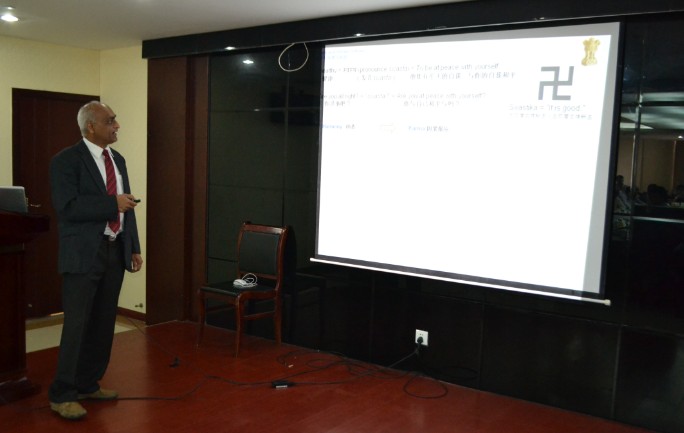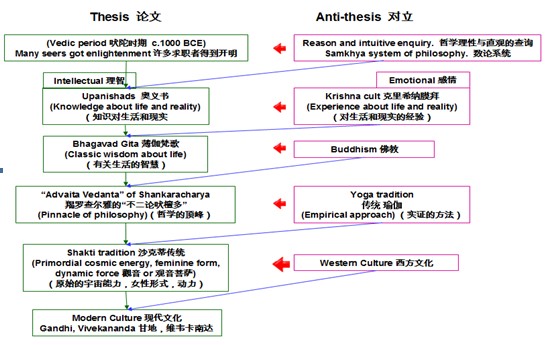和平与印度文化
Peace and Indian Culture
At
the very beginning of the civilization on the Indian land, the sun of knowledge
dawned in the minds of people and mysteries of life opened one after the other
in their hearts. The final destiny of
man was discovered at that early age itself.
They described that state as Supreme Bliss and Peace. The earliest known
civilization in India is often characterised as ‘peaceful and without warfare
or conquest’ (in comparison with all other first civilisations). However, it was the Vedic Civilization (c.
1500 BCE), that actually made the grand discovery of the Ultimate Truth—the
unsurpassable, supreme and unconquerable state beyond description. Having discovered the highest at the very
beginning of the civilization, the later generations could go no further than
to verify and re-validate these truths.
It can be seen from history that, having discovered this experiential
truthfirst, explanations, theories, dialectics, and various schools of
philosophy developed later. The methods
to be adopted for achieving that supreme state and even a choice in those
methods to suit different tastes of various people developed even later (Fig.
1). This is in contrast to the
development in the West, where the evolution is in the opposite order, i.e.,
from methods, to philosophy and then to experience.

This
makes it clear why peace has been deeply ingrained in the Indian mind. The words “shānti, shānti, shānti”,
which is “peace” repeated thrice, are uttered at the beginning and at the end
of any undertaking. The Sanskrit word
for “healthy” isswastha, which means to be collected in oneself or to
be at peace with oneself. The expression
“swastha?” is also used as a greeting meaning “Are you all right?”. According to Indian philosophy, since the
world is rather a projection of the self, one must be at peace with oneself
before seeing peace outside. The
Bhagavat Gita clearly mentions “ashāntasya kuto sukham?” (wherefrom
happiness without peace?), implying that no true happiness can be experienced
without peace.

Fig. 1 Dialectic Progress in Indian
Philosophy ( 印度哲学的辩证法进展)
The
phrase “ahimsā paramo dharma” (non-injury is the virtue supreme) has been
appearing in many ancient Indian classics and has become a part of the Indian
culture. For example, it occurs at least
5 times in Mahabharata itself, which is perhaps the oldest among the world’s
famous epics. This phrase is a central
teaching of the Sramanic religions (Non-Vedic Indian religious movement
including Jainism, Buddhism, Ajivika etc.), which thrived concurrently around
the 5thcentury BCE and claim a prior tradition over millennia. It is from this philosophy that the custom of
vegetarianism developed in India.
The
famous dictum “vasudhaiva kutumbakam” (the whole world is one single
family) appears in Mahopanishad (part of the Sāma Veda c. 1700 BCE),
Pancharātra (c. 300 BCE) and in other classics in India. History reads, horde
after horde either invaded India or took refuge, but in all cases, the aliens
were assimilated as part of the Indian family. The Indian population, thus
becoming heterogeneous developed further techniques of acceptance. Thus it is clear that peace and non-violence
is in the system and in the psyche of the Indian people.
Rajendra K. Patil Ramakrishna Mission Vivekananda University (印度罗摩克里希使命维韦卡南达大学)